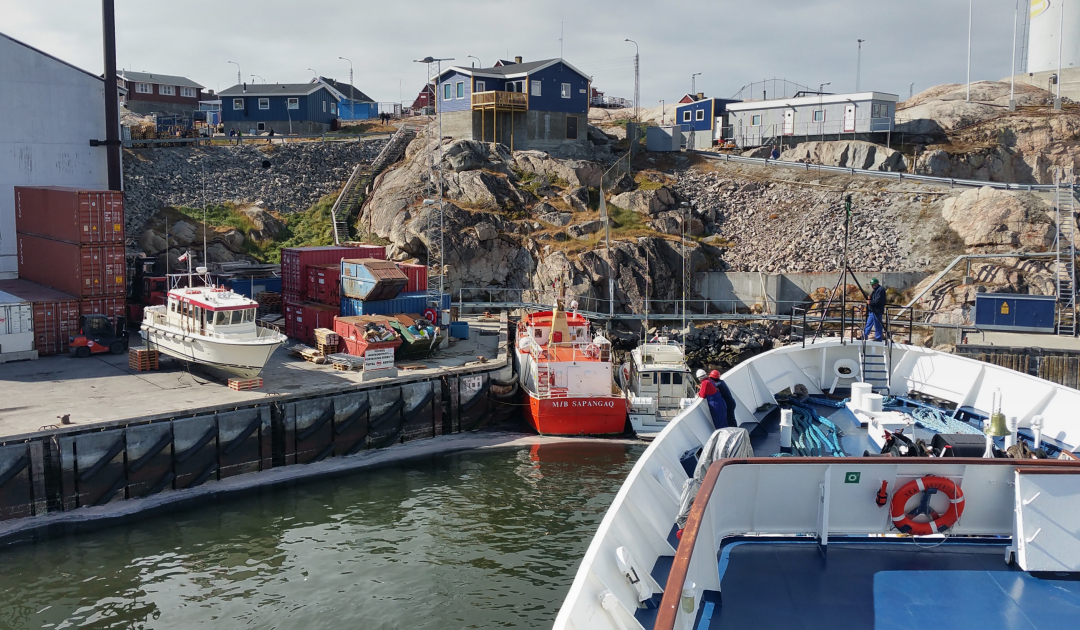
Tourism in Greenland, especially cruise tourism, had become “big business” in the years leading up to the pandemic. Because more and more people felt desire to visit the largest island in the world. And that was evident after Greenland reopened this year. But not everyone sees this development as a reason to rejoice. Two mayors of very frequently visited municipalities believe that this holds more negative than positive sides and demand that the government introduce a cap.
No more than 1,000 ship passengers per day is the main demand that the mayor of Avannaata Kommunia municipality with its main town Ilulissat, Palle Jerimiassen, had expressed to the media a few days ago. He receives support from the deep south of the country from the head of the Kujalleq municipality, Stine Egede. She also believes that there is an urgent need for a cap on the number of tourist visits per day by ships to the places and communities. Both have addressed their demands directly to the Greenlandic government and would like to see this introduced as early as next year. She points to a workshop held two years ago that resulted in a letter of intent from all stakeholders to implement a capacity cap. But since then, nothing more has happened in this direction.

Palle Jerimiassen, the head of the Ilulissat district, tells Sermitsiaq in a newspaper interview that he does not want mass tourism. He argues that on the one hand this ruins the experience of the guests and on the other hand it puts such a strain on a place like Ilulissat with its limited infrastructure that the local population also suffers. He also sees no economic benefit from too many visitors. “The ships do pay a fee,” he explains in the interview. “But that goes directly to the government. And since we are often the last place the ships visit, the guests have already bought everything they want and hardly put any more money ashore.” And Stine Egede, who has headed the administration of Greenland’s southernmost district since last year, argues similarly.. She adds that this year in particular, the cruise ships have sometimes not kept to agreements, have changed their schedules agreed with the communities at short notice and have gone somewhere else, or in other cases have suddenly just turned up on site without prior notification.


Tourism in Greenland restarted this year after a two-year break and immediately reached new record figures. This is because many of the cruise companies, especially those in the expedition travel sector, have had to change their schedules due to the war in Ukraine and the subsequent sanctions against Russia. Instead of the Russian Arctic, Svalbard, Iceland and especially Greenland were visited. In mid-May, 463 visits from ships were registered in Greenland, and in Ilulissat with Disko Bay and the icebergs, the number of visitors on certain days was up to 50 percent higher than the population, which is just 4,670. Jerimiassen said it is very nice that people want to visit Greenland, but please not all at once. This is also not sustainable, leads to massively higher costs for the municipality and threatens nature, says Palle Jerimiassen.
To better cover costs, he is calling for an increase in taxes and fees on cruise tourism in addition to a cap on visitors. The same opinion is shared by Stine Egede, who would like to use the money to increase the funds for protection of existing sites such as UNESCO sites, Norsemen ruins and villages. However, she also believes that the cruise lines and local authorities have a duty to coordinate better. It is not acceptable that several cruise ships want to call at places whose infrastructure is not designed for so many ships and guests in one day.

The criticism and demand of Palle Jerimiassen and Stine Egede has indeed been noted by other municipalities. But at the same time, the whole situation is not considered a problem. According to an inquiry of the newspaper Sermitsiaq to the administration of the largest district Sermersooq, in whose area also the capital Nuuk lies, the numbers of cruise tourists are not a problem. In Nuuk, more than 31,000 visitors were registered for this summer (the actual number will be published later, editor’s note) and for next year even more than 38,000 visitors are expected, almost four times as many people as residents. However, Nuuk also has the largest port in the country and thus also a higher capacity than other places such as Sisimiut, the second largest city in Greenland, or Ilulissat, the third largest city.
Opinions also diverge along party lines within Avannaata municipality. While Palle Jerimiassen, as a member of Siumut, is more left-wing and green, members of conservative parties are calling for Ilulissat’s UNESCO protected status to be revoked because, in their opinion, it stands in the way of economic development. Anthon Frederiksen, local politician in the district had stated in an earlier interview that they would work with all parties except Siumut on this issue.
It is not yet known whether the demands of Palle Jerimiassen and Stine Egede will be heard by the government. But the next Arctic season is already upon us and the shipping companies are already preparing. Should the demand actually find a majority, things are likely to get tight for cruise tourism in the Arctic. And many of the companies no longer have much room to maneuver, both geographically and economically.
Dr Michael Wenger, PolarJournal
More on the topic





